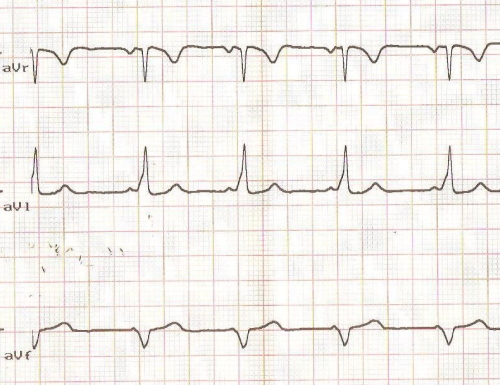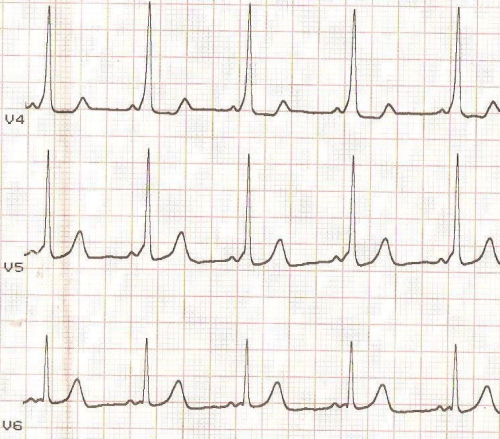WPW syndrome – left posteroseptal pathway
WPW syndrome – left posteroseptal pathway
Positive delta wave and QRS in V1 indicates a left ventricular pathway. Negative delta wave and QRS in II, III and aVF suggests posteroseptal pathway (Ref: Algorithm in Figure 35-19, Libby: Braunwald’s Heart Disease, 8th Edition).




Wolff-Parkinson-White (WPW) syndrome results from preexcitation of the ventricles through AV bypass tracts or accessory pathways. Accessory pathways are muscle bundles which connect the atria to the ventricles electrically across the mitral or tricuspid annuli or through the septum, crossing the atrioventricular insulation provided by the fibrous skeleton of the heart. Pre excitation occurs because the impulses reach the ventricle avoiding the physiological delay in the AV node. This produces shortening of the PR interval and an equal widening of the QRS complex with a slurred initial wave called as the delta wave. As a general rule the delta wave points away from the site of insertion of the accessory pathway into the ventricle as the initial conduction proceeds away from that site. Hence a positive delta in V1 indicates a left sided accessory pathway and a negative delta in V1 indicates a right sided accessory pathway. When the pathway inserts posteroseptal region, almost all the precordial leads show positive delta wave and the inferior leads show a negative delta and QRS complex, overall resembling an inferoposterior infarction. When the pathway inserts in the lateral wall of the left ventricle, the negative delta wave in lateral leads resembles a lateral wall myocardial infarction.

Left side definitely, but I’d say it is doubtful that the AP is septal – the marked R wave in V1 and negative delta in aVf would be more suggestive of a posterior or posterolateral localisation.